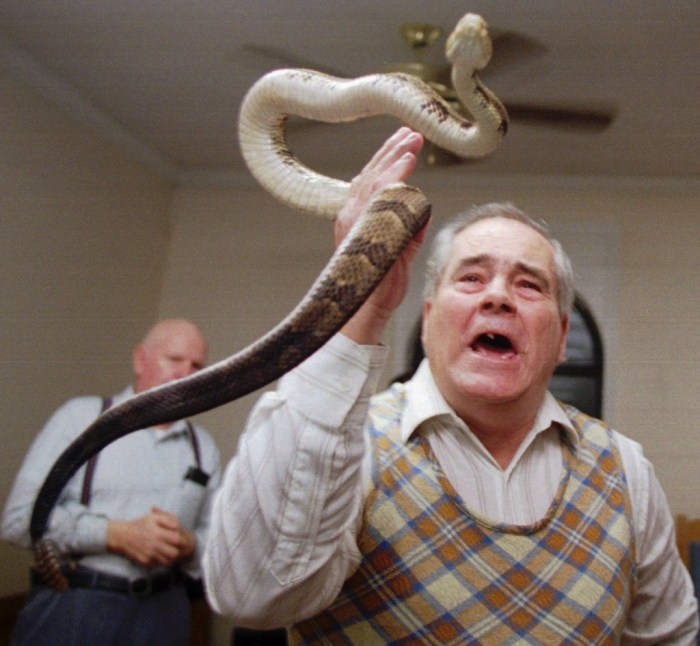
How to handle his snake yumi sin and fit kitty – Handling His Snake Yumi Sin and Fitting Kitty is a captivating exploration into the intricate world of snake handling and feline companionship. This guide delves into the essential techniques for safely handling snakes, creating an optimal living environment, providing proper nutrition, ensuring health and well-being, and navigating the complexities of cohabitation.
Whether you’re a seasoned snake enthusiast or a curious newcomer, this comprehensive resource offers invaluable insights and practical advice to help you foster a harmonious relationship with your snake and feline companion.
Handling Techniques

Handling snakes requires a combination of knowledge, skill, and respect. Proper handling techniques ensure the safety of both the snake and the handler. This section will provide detailed instructions on how to hold, restrain, and release snakes safely.
Picking Up a Snake
When picking up a snake, it is important to approach it calmly and avoid making sudden movements. Gently slide one hand under the snake’s body, supporting its weight, and use your other hand to secure its head. Hold the snake firmly but gently, avoiding excessive pressure that could injure it.
Releasing a Snake, How to handle his snake yumi sin and fit kitty
To release a snake, gently place it on the ground or in its enclosure. Support its body as you release it, ensuring it has a stable landing. Avoid throwing or dropping the snake, as this can cause injury.
Handling Aggressive or Defensive Snakes
Aggressive or defensive snakes may require specialized handling techniques. Use a snake hook or tongs to gently restrain the snake and prevent it from biting. Handle these snakes with extreme caution and only if necessary, as improper handling can increase the risk of injury.
Housing Requirements
Providing a suitable living space is essential for the well-being of a pet snake. The enclosure should meet the snake’s specific needs, ensuring adequate space, appropriate temperature, and humidity levels.
Enclosure Size
The enclosure size should be large enough for the snake to move comfortably and perform natural behaviors like stretching, climbing, and exploring. A general rule of thumb is to provide a space that is at least twice the length and width of the snake.
Ventilation and Substrate
Proper ventilation is crucial to prevent respiratory issues and maintain air quality. Ensure there are adequate ventilation holes on the enclosure’s sides and top. The substrate, which covers the bottom of the enclosure, should be absorbent and provide support. Suitable substrates include paper towels, reptile carpet, and aspen shavings.
Temperature
Snakes are ectothermic, meaning they rely on external heat sources to regulate their body temperature. Create a temperature gradient within the enclosure, with a warm side and a cool side. The warm side should be around 85-90°F (29-32°C), while the cool side can be 75-80°F (24-27°C).
Hiding Places and Water Bowls
Provide multiple hiding places for the snake to feel secure and reduce stress. These can be simple hides, such as plastic containers with holes cut out, or more elaborate structures like caves or logs. Fresh water should be available at all times in a shallow water bowl.
Basking Areas
Snakes require a basking area where they can bask under a heat source to regulate their body temperature. This can be achieved using a heat lamp or a ceramic heat emitter. Ensure the basking area is large enough for the snake to fit comfortably and is positioned on the warm side of the enclosure.
Humidity
Maintaining proper humidity levels is essential for snake health. Most species require a humidity range of 50-60%. Use a hygrometer to monitor humidity levels and adjust accordingly by adding or removing water sources or using a humidifier.
Lighting Cycles
Snakes generally have a day/night cycle. Provide a 12-hour light/dark cycle to mimic their natural environment. Use a timer to automate the lighting schedule.
Feeding and Nutrition

Feeding a snake requires understanding its specific nutritional needs, which vary based on size and species. Providing a balanced diet ensures optimal health and longevity.
There’s no shortage of ways to handle your snake Yumi Sin and fit kitty, but I’m curious about the latest strategies for increasing insurance agent productivity. Do you know any tips for insurance agents who are struggling to keep up with their workload? I’ve tried a few things with Yumi and kitty, but I’m always looking for new ideas.
Frequency and Quantity
The frequency and quantity of feedings depend on the snake’s size and metabolism. Smaller snakes typically need to eat more frequently than larger ones. Hatchlings may require daily feedings, while adult snakes may only need to eat every 7-14 days.
Prey Items
Snakes primarily consume rodents and other small animals. Suitable prey items include:
- Mice: High in protein and low in fat
- Rats: Offer a balanced nutritional profile
- Guinea pigs: Suitable for larger snakes, provide essential vitamins
Gut-Loading
Gut-loading refers to feeding prey items nutritious food before offering them to the snake. This ensures the snake receives essential vitamins and minerals. Gut-loading can be done by feeding the prey insects, fruits, or vegetables.
Live Feeding
Live feeding carries potential risks, such as injury to the snake or escape of the prey. It’s generally recommended to avoid live feeding and opt for pre-killed prey instead.
Health and Veterinary Care

Maintaining the health of your snake is crucial for its well-being. Understanding common health issues and preventive measures can help you keep your pet healthy and happy. Regular veterinary checkups are also essential to ensure early detection and treatment of any potential problems.
Wondering how to handle his snake yumi sin and fit kitty? In this guide, you’ll find tips and tricks on how to keep your snake and kitty safe and happy. From feeding to grooming, we’ve got you covered. Check out our comprehensive guide how to handle his snake yumi sin and fit kitty for all the details you need to know about how to handle his snake yumi sin and fit kitty.
Common Health Issues
Snakes are prone to various health issues, including:
- Respiratory infections:Symptoms include wheezing, coughing, and discharge from the nose or mouth.
- Skin infections:Signs include blisters, sores, or discoloration on the skin.
- Parasites:Internal or external parasites can cause weight loss, diarrhea, and lethargy.
- Metabolic bone disease:Caused by calcium deficiency, it can lead to weak bones and deformities.
Prevention and Treatment
Preventing health problems is essential:
- Proper husbandry:Maintain appropriate temperature, humidity, and cleanliness in the enclosure.
- Adequate nutrition:Provide a balanced diet that meets the snake’s nutritional needs.
- Parasite control:Regularly check for parasites and treat as needed.
- Quarantine:Isolate new snakes to prevent the spread of diseases.
If you suspect any health issues, consult a qualified reptile veterinarian promptly.
Yo, if you’re struggling to keep your snake Yumi Sin and fit kitty in check, don’t fret. Just like how increasing insurance agent productivity requires a systematic approach, handling your pets demands a similar strategy. Start with setting boundaries and stick to them, and remember, consistency is key.
So, get ready to tame that slithery Yumi Sin and give your kitty a run for its money!
Veterinary Care
Regular veterinary checkups are vital:
- Early detection:Allows for early diagnosis and treatment of potential health problems.
- Preventive care:Provides guidance on proper husbandry, nutrition, and parasite control.
- Treatment:Access to specialized care and medications for any health issues.
To find a qualified reptile veterinarian, consult with:
- Veterinary associations:American Veterinary Medical Association (AVMA) or Association of Reptile and Amphibian Veterinarians (ARAV).
- Local reptile stores:They may have recommendations or know of veterinarians who specialize in reptiles.
- Online resources:Search for “reptile veterinarians” in your area or consult websites like the ARAV’s Find-a-Vet directory.
Cohabitation and Compatibility
Cohabitating snakes can be a viable option for experienced reptile enthusiasts, but it is essential to approach this practice with caution and a thorough understanding of the potential benefits and risks involved.
The primary benefit of cohabitation is the provision of a more naturalistic environment for the snakes, allowing them to engage in natural behaviors such as thermoregulation and social interactions. However, cohabitation also carries inherent risks, including competition for resources, aggression, and disease transmission.
To handle his snake yumi sin and fit kitty, it’s important to understand their unique characteristics and needs. From feeding to grooming, each species requires specific care. For more detailed information on how to handle his snake yumi sin and fit kitty, check out this helpful guide: how to handle his snake yumi sin and fit kitty . This comprehensive resource provides expert tips and advice to ensure your pets’ well-being.
Species Compatibility
Not all snake species are suitable for cohabitation. Some species are inherently solitary and may become stressed or aggressive when housed with others. When considering cohabitation, it is crucial to select species that are known to be compatible and have similar environmental requirements.
- Suitable species for cohabitation include:
- Corn snakes (Pantherophis guttatus)
- King snakes (Lampropeltis spp.)
- Milk snakes (Lampropeltis triangulum)
- Rat snakes (Pantherophis spp.)
- Sand boas (Eryx spp.)
Monitoring and Separation
Cohabitating snakes should be closely monitored for any signs of aggression or stress. Regular physical examinations and observations of their behavior are essential to ensure their well-being. If any issues arise, such as feeding strikes, weight loss, or aggression, the snakes should be separated immediately.
Proper housing is also crucial for successful cohabitation. The enclosure should be spacious enough to accommodate all the snakes comfortably, with multiple hiding places and basking spots. Regular cleaning and disinfection are essential to maintain a healthy environment and prevent disease transmission.
Wrap-Up
In conclusion, handling your snake Yumi Sin and fitting kitty requires a multifaceted approach that encompasses proper handling techniques, suitable housing conditions, tailored nutrition, proactive health care, and responsible cohabitation practices. By embracing the knowledge and guidance provided in this guide, you can confidently navigate the unique challenges and reap the immense rewards of sharing your life with these fascinating creatures.
Remember, a well-cared-for snake and a contented kitty make for a harmonious and fulfilling household.
FAQ: How To Handle His Snake Yumi Sin And Fit Kitty
How often should I feed my snake?
The frequency of feedings depends on the size and species of your snake. Generally, smaller snakes require more frequent feedings, while larger snakes can go longer between meals. Consult a veterinarian or reputable reptile care resource for specific recommendations.
What are the signs of a healthy snake?
A healthy snake will have bright, clear eyes, a clean and unblemished skin, and a strong appetite. They should be active and alert, and their movements should be smooth and coordinated.
How can I prevent my snake from escaping?
Ensure that your snake’s enclosure is secure and has no gaps or holes. Provide plenty of hiding places within the enclosure, as snakes feel more secure when they have places to retreat to.





